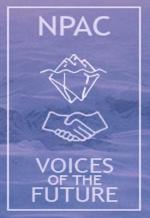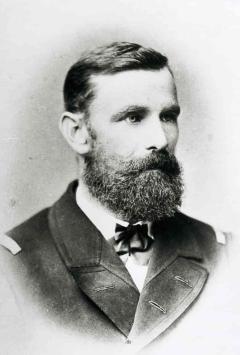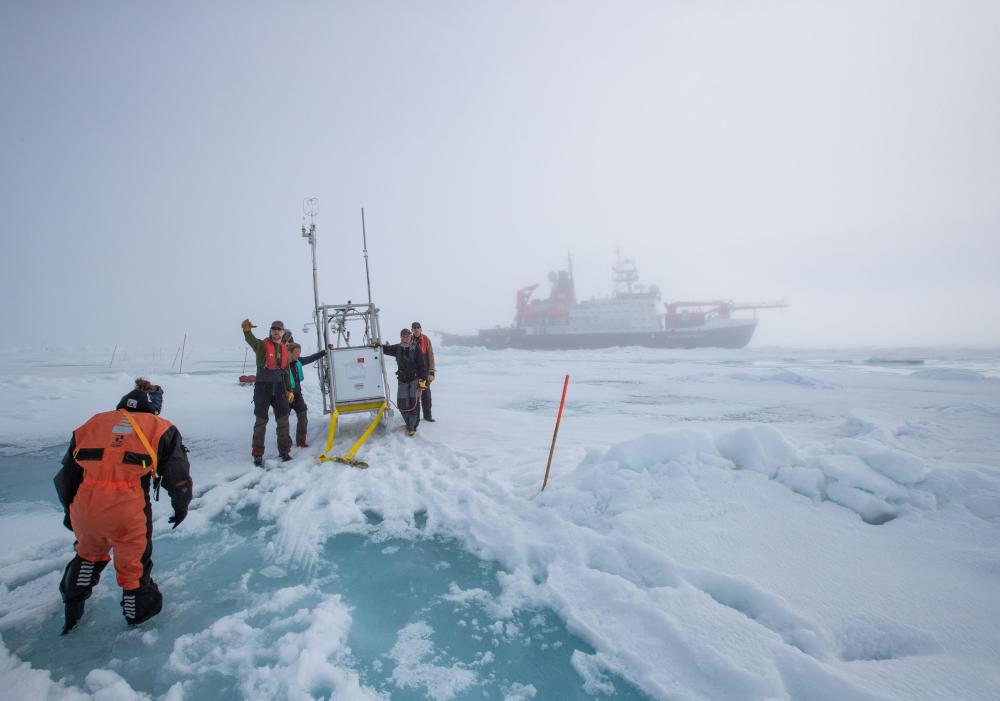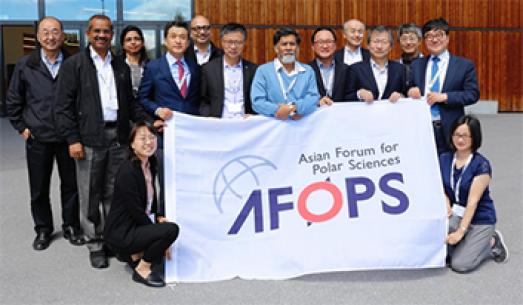Error message
By Yao Tang

Assistant Professor, Polar Research Institute of China
tangyao@pric.org.cn
Posted April 23, 2021
Modern polar scientific expeditions originated with the first International Polar Year in 1882–1883 and have developed further during each of the three subsequent International Polar Years, the most recent in 2007–2008.
The idea for the first International Polar Year can be traced back to the 1870s, when the Austro-Hungarian military officer Karl Weyprecht campaigned for ship-borne expeditions to be replaced with a multinational network of land-based Arctic observatories or geophysical stations following the “failure” of an Arctic expedition he had led with another officer.1 As a result of Weyprecht’s campaign, during the first International Polar Year 11 European nations combined their expeditions to study meteorology and magnetic phenomena in the Arctic.2

Today, too, it is important to think about how to deepen international cooperation in the Arctic through science. For example, China’s Arctic Policy notes that “China will improve the capacity and capability in scientific research on the Arctic, [and] pursue a deeper understanding and knowledge of Arctic science.”
By joining the recent Multidisciplinary drifting Observatory for the Study of Arctic Climate (MOSAiC), countries like China, Japan, and Korea successfully collaborated in a winter Arctic research expedition. Obviously, such large-scale research projects cannot be completed by a single country alone; hundreds of researchers from 20 countries were involved in the MOSAiC project, even amid the COVID-19 pandemic. To some extent it was reminiscent of the second International Polar Year in 1932–1933, when 40 nations participated despite the fact that the Great Depression was in full swing.3

The spirit of the International Polar Year today
Once again, we should be promoting the cooperative spirit of the International Polar Year. One of the emerging issues in the Arctic, for example, is whether the signatories of the Agreement to Prevent Unregulated High Seas Fisheries in the Central Arctic Ocean can effectively implement the agreement. One former Korean official has suggested that China, Japan, and Korea could lead scientific surveys of fisheries in the Central Arctic Ocean with their research icebreakers.4
An Arctic scientific expedition involving icebreakers from different countries would be of great significance. Currently, the three countries combined have at least four research icebreakers operating in the Arctic, and a Russian icebreaker participated in MOSAiC in the summer of 2020 by carrying scientific personnel.
The Asian Forum for Polar Sciences (AFoPS), a nongovernmental organization established in 2004, provides another example for understanding the spirit of the International Polar Year. AFoPS, which consists of six members and four observers, has realized multilateral research and logistics cooperation that would have been previously unimaginable.

Polar scientists from Thailand, for example, were invited as observers to the sixth AFoPS meeting in Malaysia in 2007.5 Then China and Thailand signed a memorandum of understanding regarding Antarctic cooperation in 2013. Later, Thai scientists participated in Chinese Antarctic research expeditions. Thus, by using such step-by-step approaches, more countries can be involved in polar research expeditions, which is consistent with one of the objectives of AFoPS. Member countries can work together to encourage more Asian countries’ involvement in polar science.
Since many countries still lack the capability to participate in Arctic international collaboration, multilateral research and logistics cooperation is of the utmost importance in the next decade. Therefore, we should pay attention to cooperation not only in intergovernmental platforms such as the Arctic Council but also in nongovernmental platforms such as the AFoPS.
It has been more than a century since the first International Polar Year, but the idea still offers wisdom for future Arctic international cooperation.
The views expressed are those of the author and do not necessarily reflect the policies or positions of the East-West Center or of any other organization.
References
1 Rip Bulkeley, “The First Three Polar Years—A General Overview,” in Susan Barr, Cornelia Lüdecke (eds.), The History of the International Polar Years (IPYs), Heidelberg: Springer, 2010, pp. 2–3.
2 Paul Arthur Berkman, Science into Policy: Global Lessons from Antarctica, San Diego: Academic Press, 2002, p. 51.
3 Rip Bulkeley, “The First Three Polar Years—A General Overview,” in Susan Barr, Cornelia Lüdecke (eds.), The History of the International Polar Years (IPYs), Heidelberg: Springer, 2010, p. 4.
4 Yoon Hyung Kim, Oran R. Young, Robert W. Corell, Jong Deog Kim, Arild Moe, and David L. VanderZwaag, “Overview: Arctic 2030 and Beyond—Pathways to the Future,” in Robert W. Corell, Jong Deog Kim, Yoon Hyung Kim, Arild Moe, David L. VanderZwaag, Oran R. Young (eds.), The Arctic in World Affairs: A North Pacific Dialogue on Arctic 2030 and Beyond—Pathways to the Future, Busan, Honolulu: Korea Maritime Institute, East-West Center, 2018, p. 21.
5 Yeadong Kim, Jihoon Jeong, “The Development of the Asian Forum for Polar Sciences (AFoPS),” Polar Science, Vol. 9, No. 4, 2015, p. 340.
By Yao Tang

Assistant Professor, Polar Research Institute of China
tangyao@pric.org.cn
Posted April 23, 2021
Modern polar scientific expeditions originated with the first International Polar Year in 1882–1883 and have developed further during each of the three subsequent International Polar Years, the most recent in 2007–2008.
The idea for the first International Polar Year can be traced back to the 1870s, when the Austro-Hungarian military officer Karl Weyprecht campaigned for ship-borne expeditions to be replaced with a multinational network of land-based Arctic observatories or geophysical stations following the “failure” of an Arctic expedition he had led with another officer.1 As a result of Weyprecht’s campaign, during the first International Polar Year 11 European nations combined their expeditions to study meteorology and magnetic phenomena in the Arctic.2

Today, too, it is important to think about how to deepen international cooperation in the Arctic through science. For example, China’s Arctic Policy notes that “China will improve the capacity and capability in scientific research on the Arctic, [and] pursue a deeper understanding and knowledge of Arctic science.”
By joining the recent Multidisciplinary drifting Observatory for the Study of Arctic Climate (MOSAiC), countries like China, Japan, and Korea successfully collaborated in a winter Arctic research expedition. Obviously, such large-scale research projects cannot be completed by a single country alone; hundreds of researchers from 20 countries were involved in the MOSAiC project, even amid the COVID-19 pandemic. To some extent it was reminiscent of the second International Polar Year in 1932–1933, when 40 nations participated despite the fact that the Great Depression was in full swing.3

The spirit of the International Polar Year today
Once again, we should be promoting the cooperative spirit of the International Polar Year. One of the emerging issues in the Arctic, for example, is whether the signatories of the Agreement to Prevent Unregulated High Seas Fisheries in the Central Arctic Ocean can effectively implement the agreement. One former Korean official has suggested that China, Japan, and Korea could lead scientific surveys of fisheries in the Central Arctic Ocean with their research icebreakers.4
An Arctic scientific expedition involving icebreakers from different countries would be of great significance. Currently, the three countries combined have at least four research icebreakers operating in the Arctic, and a Russian icebreaker participated in MOSAiC in the summer of 2020 by carrying scientific personnel.
The Asian Forum for Polar Sciences (AFoPS), a nongovernmental organization established in 2004, provides another example for understanding the spirit of the International Polar Year. AFoPS, which consists of six members and four observers, has realized multilateral research and logistics cooperation that would have been previously unimaginable.

Polar scientists from Thailand, for example, were invited as observers to the sixth AFoPS meeting in Malaysia in 2007.5 Then China and Thailand signed a memorandum of understanding regarding Antarctic cooperation in 2013. Later, Thai scientists participated in Chinese Antarctic research expeditions. Thus, by using such step-by-step approaches, more countries can be involved in polar research expeditions, which is consistent with one of the objectives of AFoPS. Member countries can work together to encourage more Asian countries’ involvement in polar science.
Since many countries still lack the capability to participate in Arctic international collaboration, multilateral research and logistics cooperation is of the utmost importance in the next decade. Therefore, we should pay attention to cooperation not only in intergovernmental platforms such as the Arctic Council but also in nongovernmental platforms such as the AFoPS.
It has been more than a century since the first International Polar Year, but the idea still offers wisdom for future Arctic international cooperation.
The views expressed are those of the author and do not necessarily reflect the policies or positions of the East-West Center or of any other organization.
References
1 Rip Bulkeley, “The First Three Polar Years—A General Overview,” in Susan Barr, Cornelia Lüdecke (eds.), The History of the International Polar Years (IPYs), Heidelberg: Springer, 2010, pp. 2–3.
2 Paul Arthur Berkman, Science into Policy: Global Lessons from Antarctica, San Diego: Academic Press, 2002, p. 51.
3 Rip Bulkeley, “The First Three Polar Years—A General Overview,” in Susan Barr, Cornelia Lüdecke (eds.), The History of the International Polar Years (IPYs), Heidelberg: Springer, 2010, p. 4.
4 Yoon Hyung Kim, Oran R. Young, Robert W. Corell, Jong Deog Kim, Arild Moe, and David L. VanderZwaag, “Overview: Arctic 2030 and Beyond—Pathways to the Future,” in Robert W. Corell, Jong Deog Kim, Yoon Hyung Kim, Arild Moe, David L. VanderZwaag, Oran R. Young (eds.), The Arctic in World Affairs: A North Pacific Dialogue on Arctic 2030 and Beyond—Pathways to the Future, Busan, Honolulu: Korea Maritime Institute, East-West Center, 2018, p. 21.
5 Yeadong Kim, Jihoon Jeong, “The Development of the Asian Forum for Polar Sciences (AFoPS),” Polar Science, Vol. 9, No. 4, 2015, p. 340.

